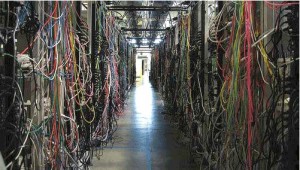Radio Frequency Identification, or RFID as it is more commonly known, is not particularly new, having been around in various forms for a number of years. It suffered in the early days being seen as a technology looking for a problem to solve which, coupled with the high cost of deployment and issues around reliability, has seen it struggle to make an impact in the events industry.
Technology always takes a while to mature (I owned my first handheld smart device in about 1999 and it was hopeless by today’s standards!) As it matures the price comes down, the reliability and features improve and, most importantly, people have a chance to understand where it can used effectively.
RFID is in that position now. You do not think twice about using an Oyster card which is a great example of effective RFID use. The cost of RFID cards, stickers, wristbands etc has been falling fast and the reader technology is now widely available, positioning RFID nicely for an explosion in use.
Back to basics first though, what exactly is RFID? In simple terms it is a small ‘chip’ embedded into a card, sticker, wristband or other object which can transmit, receive and store small amounts of information when placed close to a special reader. It is this ability to store information on the chip which differentiates modern RFID with older systems such as those used in retail stores on high value items, and from where the term ‘smartcard’ comes. The second key feature of RFID is that the card or tag does not need to be inserted into a reader it can just be held close to a reader, making it ideal for rapid transactions.
Recently there have been a few announcements of exhibition venues, seen as a significant potential market for RFID, moving towards an RFID based solution for tracking visitors and over time I think this will increase but it probably will not be a rapid transition as there are already fairly good systems in place using bar codes and scanners. The real opportunity lies in other areas such as festivals and big shows where RFID offers real promise of solving a number of challenges.
Take music festivals for example, the holy grail maybe for every attendee to have an RFID enabled wristband that is used for access to the event and as a means of cashless payment but that will take a few years yet to become mainstream. More immediately RFID can be used to assist in the management of crew and equipment. Crew catering is a pain for many organisers, a hassle to manage and often a black hole of cost. Using an RFID ‘smart card’ for each crew member pre-programmed with their meal allocations, coupled with an RFID reader at the catering location and now meals are processed quickly and efficiently. That’s only part of it though as now the organiser has real-time information as to how many meals are being consumed, what the forecast is for tomorrow, even what the peak times are. These data points seem trivial but actually provide cost saving information when you discover for example that on average the crew are only consuming 70% of the meals allocated (and paid for).
Expand the ‘catering card’ to be the ID card (as it already has information such as name and contractor company programmed onto it) and it could be used for checking in and out equipment such as radios, plant and cabin keys. Away go endless pieces of paper replaced by a real-time screen showing who has what. Go one step further and program qualifications into the system and then the cherry picker or manitou can only be checked out by a crew card which has the correct accreditation. The same system then extends to authorisation for restricted areas, providing the ability to ‘cancel’ a card centrally if it is lost.
So what’s holding back wide-scale use of RFID? Cost was a problem but now the price point is much more attractive. Reliable networks at events is often cited but these days the networks at events are expected to be like an office network and a correctly designed RFID system has built in tolerance (for example Oyster readers process most information locally and then send updates to the central system later). The biggest barrier is probably the concern over the change to processes that are required when any new system is implemented. The solution to this is not to use a ‘big bang’ approach but a 2-3 year strategy that will reap long term rewards. The lessons learnt along the way will ensure the holy grail of full attendee RFID is a much smoother affair.








